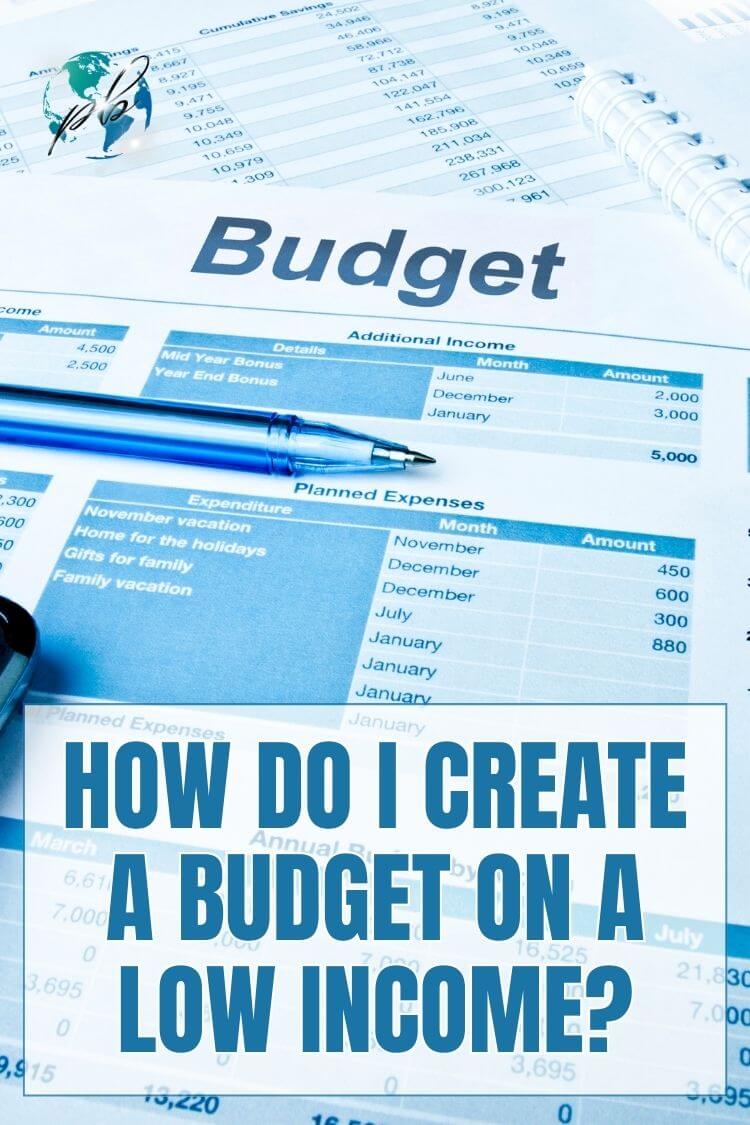How do I create a budget on a low income?
You may be reading this because you’re a bit overwhelmed by finances, perhaps even struggling to budget, especially with a low income. Maybe it seems impossible or you’re just not sure how to start. So, how do I create a budget on a low income?
Start by listing all your income sources. Next, track all expenses, dividing them into necessary (rent, food, utilities) and optional (entertainment, dining out). Subtract your expenses from your income. Aim to save by reducing optional expenses and sticking to your budget.
There’s good news that it’s absolutely possible, and help is readily available. Take comfort in the fact that many have faced this challenge before you and triumphed.
It might not be the easiest of tasks, but trust me when I say that taking control of your finances leads the path to financial freedom. Budgeting is often seen as complicated or time-consuming, but it doesn’t have to be.
Whether you’re an individual or part of low-income families, creating a budget can provide clarity about where your money goes each month. This awareness alone can reduce stress as it gives back some control over your financial situation.
If we look closely at those who successfully budget on a low income, we find they are excellent at finding ways to save money for low-income people like themselves. They’ve mastered strategies for budgeting on a low income which include spending hacks and meticulous planning.
The good news is that there are numerous resources available out there designed specifically for low-income earners eager to regain their financial footing. For example, government assistance programs for low-income people can provide relief from food and housing costs freeing up funds for other necessary expenses.
Additionally, non-profit organizations dedicated to supporting individuals in financial hardship offer comprehensive advice including tips for budgeting on a low income and areas where one could cut back on spending without drastically impacting their quality of life.
Creating a budget doesn’t guarantee instant surplus funds or an immediate halt to monetary concerns but it does represent the first step towards wielding control over an area that typically feels uncontrollable. Your own personal economy.
Remember: Budget creation isn’t about restriction, it’s about understanding how much money comes into your household and how much goes out —and ultimately making decisions based on that knowledge, so even though you may think “How do I create a budget on a low income?”, don’t despair!
Like any other skill worth acquiring in life – practice makes perfect.
What is a budget?
Now, you may ask what a budget really is.
Well, in its simplest form, a budget can be thought of as an itemized summary of probable income and expenses for a given period. It’s essentially a financial plan that lets you manage your money by breaking down your spending into different categories.
This helps you understand where your money goes each month and allows you to control your spending habits.
A budget is not just about restricting what you spend or cutting back as drastically as possible.
Rather, it’s about understanding how much money is coming in, where it’s going out and then deciding where it would be best utilized. With proper budgeting on a low income, even the seemingly overwhelming burden of managing finances starts to feel more manageable.
The beauty of creating a budget is that it provides clarity over your financial situation. You need to know exactly what’s happening with your hard-earned cash if you want to get on top of things financially.
Even if your income would be considered low by some standards, creating a strategic plan for where each dollar goes can go a long way in achieving financial freedom. Budgeting isn’t only about skipping those little luxuries or trying desperately to save pennies here and there – no!
It’s also about making sure every penny works hard for you rather than disappearing without adding real value to your life. It’s all part of finding ways to save money for low-income people without feeling like we’re denying ourselves the things we really need.
Regardless if you’re single or part of a low-income family unit, the principles remain the same: being aware of every single penny coming in and going out can help improve financial status over time even on low earnings; that’s one key tip for budgeting on a low income!
The detailed scrutiny provided by budgeting provides both peace-of-mind and surprising savings through careful consideration before each purchase.
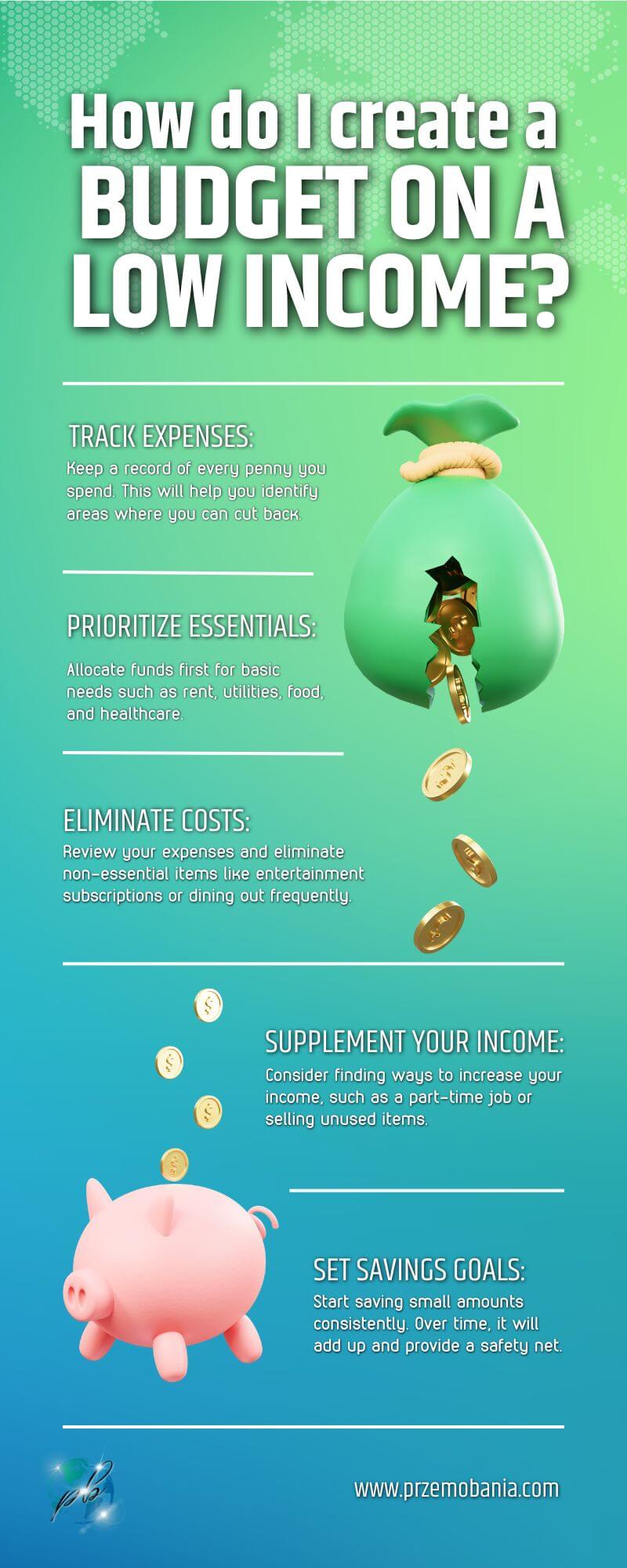
Why is budgeting important?
The significance of budgeting, particularly for low-income individuals and families, is something that simply cannot be overstated. Essentially, budgeting is the foundation upon which financial freedom is built. By creating a plan for each dollar that comes in, you gain control over your money instead of feeling like it controls you.
Regardless of how modest your income might be, understanding where your money goes will empower you to make decisions that can improve your financial situation. Now let’s talk about savviness when it comes to spending.
In truth, budgeting on a low income often requires not just a keen eye for detail but also an arsenal of spending hacks and money-saving ideas. It’s not simply about restricting yourself from things you want or need but being clever and resourceful with what’s available to you.
- Consider this – are there cheaper alternatives to items you regularly buy?
- Could you cook at home more instead of dining out?
It’s these small changes that add up over time. Quite frankly, many are overwhelmed by finances due mainly because they feel they’re struggling to make ends meet let alone budget their earnings effectively.
But don’t worry!
There are numerous tips for budgeting on a low income out there that can help guide the way towards better money management without adding extra stress or strain.
Remember: government assistance for low-income people exists precisely because everyone encounters financial hardship at some point in their lives. These aids offer temporary relief so use them as stepping stones towards self-sustainability without hesitation if the need arises.
In addition, non-profit organizations also exist specifically designated to assist low-income individuals and families in finding ways to save money and get by more easily each day – many even provide educational resources on how to create a budget on a low income effectively. Similarly cutting back on spending does not mean depriving yourself entirely but rather making smart choices while keeping an eye out for strategic ways to stretch each dollar further.
So take heart!
Even if it may seem daunting at first glance, strategies for successful budgeting on a low income are within reach — all it takes is some dedication and perseverance along with a willingness to learn new approaches and adapt as needed.
Is it possible to budget on a low income?
It’s a common misconception that budgeting is only for those with a substantial or overflowing income. However, let me assure you, it’s not only possible but also imperative to create a budget on a low income. Budgeting becomes even more essential when every cent counts.
You may feel overwhelmed by finances initially, but trust me, with the right strategies for budgeting on a low income, you can maximize your resources and reduce financial stress. Firstly, let’s debunk this myth – budgeting does not necessitate an abstinence from life’s pleasures.
It merely implies better planning and execution of your expenses. Cutting back on spending doesn’t mean you have to surrender all comfort, instead, it’s about making smart choices that make the most out of what you have.
The primary benefit here is that you are less likely to run out of money before your next paycheck. Having control over where your money goes opens doors to better financial decisions which can potentially lead to financial freedom in the future.
For example, finding ways to save money for low-income people might seem challenging initially, however, several small changes in daily habits can lead up to significant savings at the end of each month. To put this into perspective: choosing homemade meals over take-outs or swapping branded goods for store brands are excellent money-saving ideas without compromising quality or satisfaction.
Budgeting also enables individuals and families living on limited funds to set aside some amount for unexpected expenses or emergencies – creating a sort of ‘financial cushion’. It could be as simple as setting aside loose change at the end of each day or employing various spending hacks like using coupons while grocery shopping.
There are numerous non-profit organizations and government assistance programs specifically designed for people trying to budget on a low income. These bodies provide resources such as counseling services and workshops which help individuals develop skills necessary for effective budget management.
Some even offer assistance in areas like food costs and housing bills relieving some financial pressure off low-income families.
So, whether you’re single or supporting a family on minimum wage, whether you’re juggling multiple jobs or facing unemployment; remember that it is not just possible but crucially important for everyone – regardless of their financial situation – to have an understanding of how they can create an effective budget plan.
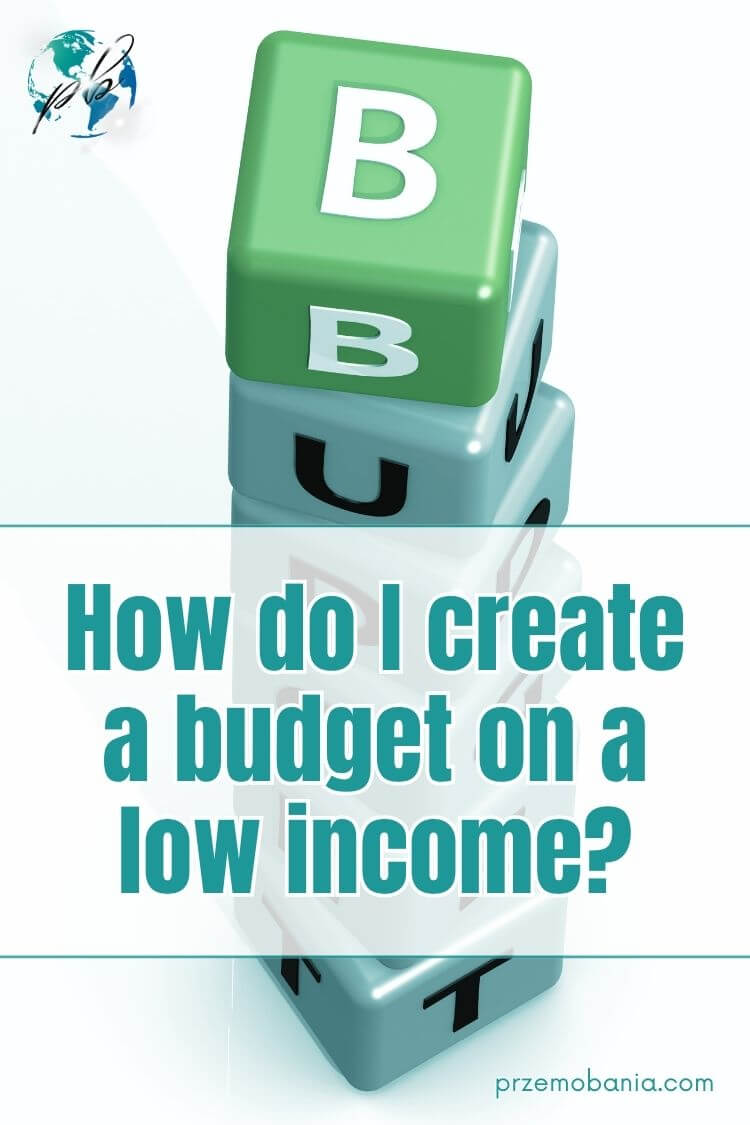
Step 1: Track your income and expenses.
The cornerstone of establishing a budget, regardless of your income level, is keeping an eagle eye on your money flow. This means becoming intimately familiar with every dollar that enters and exits your account.
As straightforward as it sounds, many people find this part daunting. It might seem like an overwhelming task when you’re already struggling to make ends meet, but trust me, it gets easier with time and practice.
Start by jotting down your total monthly income first – this needs to include all sources of cash inflow such as your salary, any side hustles you might have or even government assistance for low-income people if that applies to you. Conversely, the next essential step is tracking where each penny goes.
This doesn’t mean simply jotting down rent and utilities, it’s about knowing where every single cent is being spent – down to the last coffee or bus fare. You see, when you are grappling with a low income, every little bit counts.
Cutting back on spending for low-income people might mean scrutinizing the smallest purchases since they often go unnoticed but cumulatively they can significantly bloat the budget. And sometimes we spend money on things we don’t really need without realizing it – these are what I like to call “invisible expenses”.
Once we start tracking these expenses carefully, we can figure out where our money goes and determine areas where we can dial back. Budgeting tips often highlight this approach because monitoring income and expenditures gives a clear picture of one’s financial situation –whether you’re financially flush or part of low-income families trying to stretch each dollar further.
For those feeling overwhelmed by finances due to a limited income stream, understanding exactly how much comes in and how much goes out can provide some semblance of control over their economic status.
Truth be told though that tracking alone may not be enough, as finding ways to save money for low-income people becomes crucial here too.
There are numerous strategies for budgeting on a low income which revolve around frugality like DIY methods or clever spending hacks such as planning meals ahead or using public transportation instead of owning a car. There are resources available too –non-profit organizations for low-income people offer valuable advice while other financial tools can help keep tabs on the budget effortlessly.
Remember there’s no shame in seeking help from others; in fact seeking guidance in anything unfamiliar is usually sensible —that includes how to create a budget on a low income too!
The journey towards financial freedom begins with small steps undertaken consistently over time —and tracking your earnings & expenses diligently forms the bedrock of such journeys.
Step 2: Set financial goals.
With a clear picture of your income and expenses now in view, the next crucial step is setting financial goals. This is a pivotal part of budgeting, especially if you’re on a low income.
If you’re feeling overwhelmed by finances and struggling to budget, it’s essential to remember that these goals don’t have to be monumental, but they do have to be meaningful. One might argue that this step should come first, before tracking expenses or anything else.
However, without understanding where your money goes and how much you have coming in, it’s hard to set realistic goals. A good starting point might be finding ways to save money for low-income people who are trying to cut back on spending.
Say goodbye to any unnecessary expenditures that may seem minor but eventually add up over time – these are the spending hacks we all need. Don’t worry, you’re not alone here; many low-income families face these same challenges daily.
These budget tips can create a significant impact by freeing up funds that can contribute towards achieving your financial freedom. Whether it’s saving for an emergency fund or cutting back on groceries or utilities or paying down debt—the aim is the same: setting achievable targets that will slowly but surely lead you towards financial stability.
How do I create a budget on a low income?
Well, having clear objectives is part of the answer.
Remember this—budgeting isn’t about restricting what you spend but enabling you to spend without guilt or worry—a means to get your money working for you instead of against you. Even if it seems impossible right now with strategies for budgeting on a low income like this one—it won’t always feel this way.
There may even be government assistance available for low-income people or non-profit organizations that can help provide guidance and resources during this journey—don’t hesitate in seeking them out! It’s crucial not just thinking about surviving from paycheck-to-paycheck but building towards long-term stability—this is what true financial freedom looks like!
Remember that everyone’s journey is unique. What works for one person might not work for another – so keep experimenting with different methods until you find what works best for your circumstances!
Step 3: Create a spending plan.
Creating a spending plan is the meat and potatoes of budgeting, especially when you’re working with a small income. It might seem complicated at first, especially if you’re feeling overwhelmed by finances, but it’s as easy as pie once you get the hang of it. And truth be told, achieving financial freedom starts with this simple step.
Now, pay attention to this trick. For your spending plan to work effectively, you have to prioritize your expenses.
Essential things like rent or mortgage payments, utilities, food and transportation should top the list. Then comes education if applicable and minimum debt payments.
After that, anything else like entertainment or wants fit in. For low-income families who might think they don’t have enough money even for necessities – I’ve got some good news!
There are non-profit organizations for low-income people out there that can provide forms of support such as food banks and assistance with utility bills. Similarly, there’s government assistance for low-income people too – look into benefits like SNAP for groceries or HUD programs for affordable housing.
Now let’s talk about how we can cut back on spending – one of the key strategies for budgeting on a low income. Are there any areas where you feel like you’re splurging?
Remember this isn’t about punishing yourself – it’s just about finding ways to save money using smart spending hacks. You’d be amazed at how much you can save by making seemingly minor changes such as unplugging electronics when they’re not in use or making your coffee at home instead of buying it every day.
Yet importantly – always remember to include some room in your budget for savings! I know what you’re thinking: “How can I possibly save when I’m struggling to meet my basic needs?”
Trust me; every little bit adds up over time just fine.
So no matter how tight things may seem right now – try to set aside a small amount each month towards your savings goals. This is all easier said than done but trust me these tips will help make that leap from struggling to budget on a low income towards financial freedom considerably smaller.
Remember everyone has their own unique journey towards mastering their finances – so don’t compare yours with others’. Just stay focused on your goals and keep working towards them slow and steady.
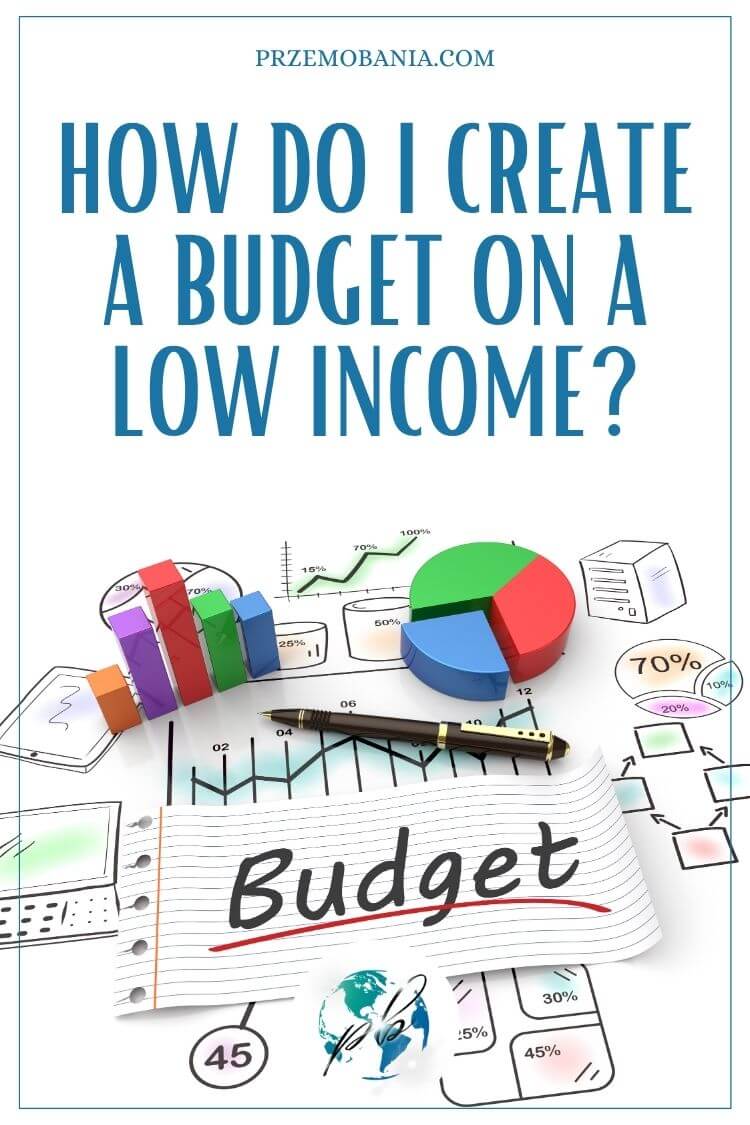
Find side hustles to make extra money.
One of the most effective strategies for budgeting on a low income is finding additional sources of income. Many people are often overwhelmed by finances, believing they are trapped in their financial situation without room for improvement.
But let me assure you, there is always a way out.
Take it from someone who’s been there; even when you’re struggling to budget, opportunities exist to create more income that can lead you to financial freedom eventually. Side hustles have become quite popular over recent years as they present an opportunity to increase your overall earnings without necessarily having to give up your day job.
By finding ways to earn extra money in your free time, the struggles that come with creating a budget for low-income people can be eased significantly. There are endless side hustle opportunities available today thanks to technology and the internet.
From freelance writing and graphic design work to online tutoring or selling handcrafted items, there’s something for everyone depending on your skills and interests. You could also consider traditional part-time jobs such as babysitting, dog walking or house cleaning – all of which don’t typically require specific qualifications except reliability and hard work.
However, it’s important not just to focus on generating more income but also on managing what you already have wisely. Some money-saving ideas I recommend include cutting back on unnecessary spending such as eating out or subscribing to services you rarely use.
Set a strict rule about impulse buying.
Give yourself 48 hours before making non-essential purchases above a certain amount – this will avoid hasty decisions that might disrupt your budget plan.
If your financial situation seems dire, don’t hesitate to seek assistance either from government programs designed for low-income families or non-profit organizations offering help in various forms—from food banks and clothing closets up-to housing assistance.
Some might see this as an uncomfortable step, but remember these resources are meant precisely for moments of hardship like these. Even if it seems challenging at first glance, knowing how to create a budget on a low income is possible with the right attitude and tools at hand—extra earnings through side hustles combined with smart spending hacks alongside possible assistance if necessary can provide relief when feeling overwhelmed by finances.
Conclusion on how do I create a budget on a low income.
Understanding how to create a budget on a low income might initially feel daunting, but it’s not insurmountable. Far from being a mere restrictive tool, a budget is essentially an empowering roadmap that guides you toward financial freedom, especially so for low-income families.
Money-saving ideas and strategies for budgeting on a low income are countless – from cutting back on spending to finding ways to save money in areas you might not have previously considered.
If you’re overwhelmed by finances and have been struggling to budget, remember that small steps can make a big difference over time. Cutting back on spending doesn’t mean completely eliminating things you enjoy, rather it necessitates thinking more about needs versus wants and finding spending hacks that work for your lifestyle.
Perhaps that entails planning meals in advance and shopping smarter at the grocery store or opting for free outdoor activities instead of costly entertainment options. You may also want to consider seeking out resources tailored specifically for low-income people who wish to take control of their finances.
Government assistance programs can provide some relief, enabling those with limited income to meet their basic needs while they focus on formulating robust financial strategies. Non-profit organizations often offer courses or workshops that teach practical tips for budgeting on a low income as well as other essential personal finance skills.
A budget shouldn’t be viewed as something rigid or restrictive — think of it more like guidelines designed to help you achieve your goals and avoid unnecessary stress caused by financial woes. Remember: every dollar saved is progress, no matter how small it may seem at the moment!
Creating a budget on a low income may initially seem like an uphill battle but armed with the right tools and mindset, this endeavor is manageable.
By tracking your expenses diligently, setting realistic goals, embracing money-saving habits and tapping into available resources – be they government assistance programs or non-profit organizations – anyone can take strides towards better money management and eventually towards financial freedom.
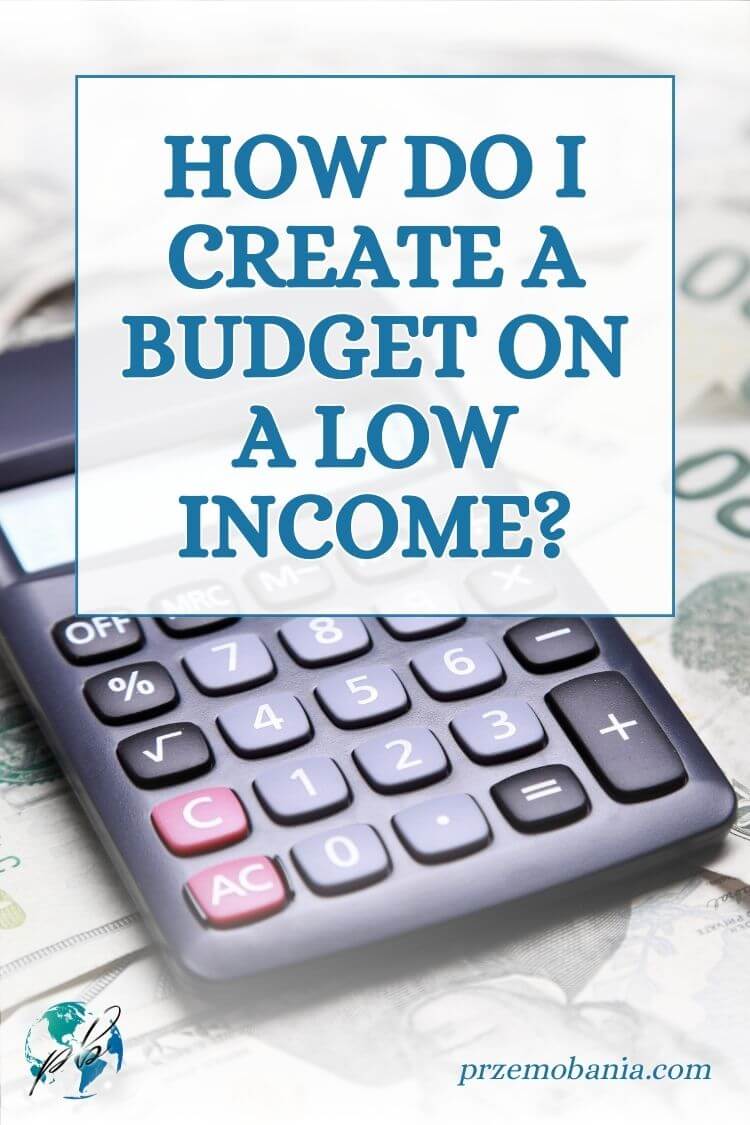
FAQ about creating a budget on a low income.
Words of encouragement.
I know you might be feeling overwhelmed by your finances right now. Trust me, it’s a common sentiment among low-income families who are struggling to budget.
But remember, every storm in life is temporary and the sun always comes out eventually. So, why not think of this phase as an opportunity?
An opportunity to learn how to create a budget on a low income and finally gain the financial freedom you’ve been yearning for? You’re not alone in this journey.
There are numerous government assistance programs for low-income people, as well as non-profit organizations that help you get back on your feet financially. These resources can help ease the burden while you’re implementing strategies for budgeting on a low income.
But let’s be clear: Budgeting doesn’t mean depriving yourself of everything fun or good in life – far from it! It means being strategic about where your money goes and finding spending hacks that allow you to save more while still living a fulfilling life.
This could mean cutting back on spending in certain areas or finding creative ways to enjoy what you love without breaking the bank. And yes, budgeting is possible even if one has limited resources.
It’s all about putting those budget tips into practice and keeping an eye open for money-saving ideas that suit your lifestyle and needs best – because nobody knows them better than you do! Embarking on this journey towards financial stability might seem daunting at first glance but remember: You have everything it takes to improve your financial situation.
Use these tips for budgeting on a low income as stepping stones towards achieving financial independence. With patience, perseverance, and practicality, I assure you that it’s very possible to thrive even when living on a tight budget.
Remember always; Your current circumstances don’t define your future possibilities! Keep nurturing that hope within with determination because no challenge is too great if we face it head-on with resilience and courage.


Przemo Bania is a blogger and writer who helps people get out of their traditional jobs to start a blogging career. Przemo also runs a health blog advocating for endometriosis and fibromyalgia…

